
A complete basic set of poker chips used in private poker games or other gambling games typically consists of white, red, green and black chips. Larger high stakes tournaments can use chipsets with many more colors. When playing Texas Hold ‘Em Poker, Omaha Hold’Em Poker, or any game that includes chips as currency, it’s important to know what each chip is worth. Although there is no official rule on how chip values are assigned, common standards have been used for most poker events. If you want to learn more about this topic and which other poker chips are there go check Gclub and find out.
Regardless of the system you use, make sure that all participants understand the denominations and values of each type of chip. A good way to do this is to write down and set up a creed for everyone to see.
Basic poker chips and standard values

White, $ 1
Red, $ 5
Orange $ 10
Yellow $ 20
Green, $ 25
Black, $ 100
Purple $ 500
Maroon $ 1000
Full poker chips and standard values

White, $ 1
Yellow, $ 2 (rarely used)
Red, $ 5
Blue, $ 10
Gray, $ 20
Green, $ 25
Orange, $ 50
Black, $ 100
Pink, $ 250
Purple, $ 500
Yellow, $ 1000 (sometimes burgundy or gray)
Light Blue, $ 2000
Brown, $ 5,000
There are some variations for these denominations (e.g. green is occasionally played as $ 20).
When hosting a poker event
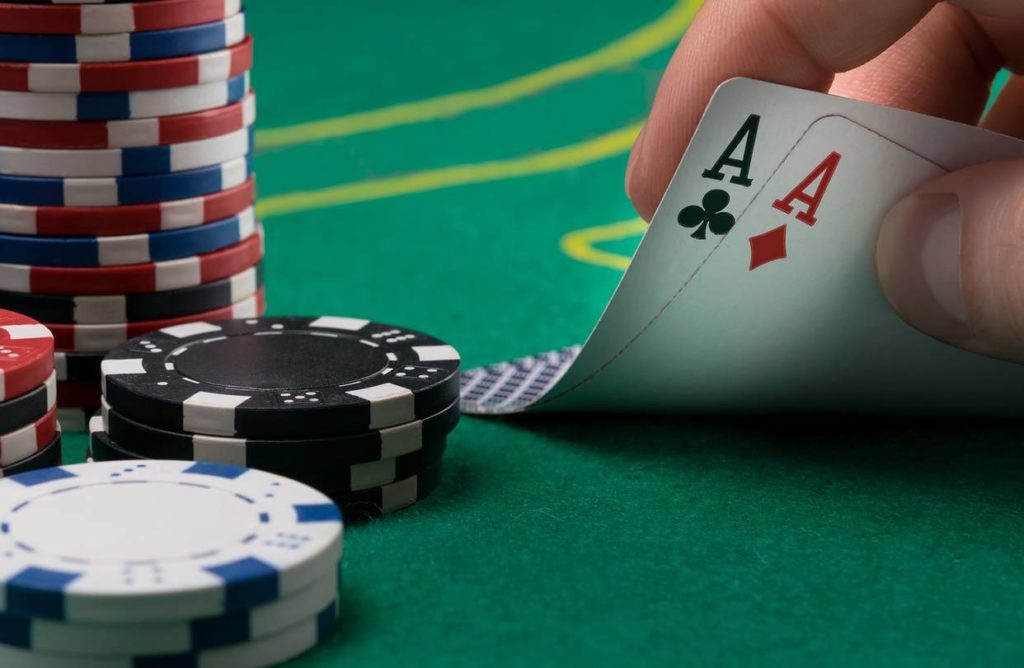
If you host a poker event with up to 10 players, experts suggest that you have about 500 chips in three or four primary colors.
In case you host a larger game involving up to 30 people, a collection of 1000 chips in four or five colors is recommended. If you’re putting together a set of chips to run your games, we recommend keeping the number of different colors fairly low and compiling the collection so you have the most chips in the lowest denomination, with fewer chips as the denominations climb.
For example, if you are assembling a set of four chip values of $ 1, $ 5, $ 10, and $ 25, the number of tokens per ratio should be 4: 3: 2: 1. For example, on a set of 500 chips, you should have 200, 150, 100 and 50 chips in white, red, blue and green.
Casino chips
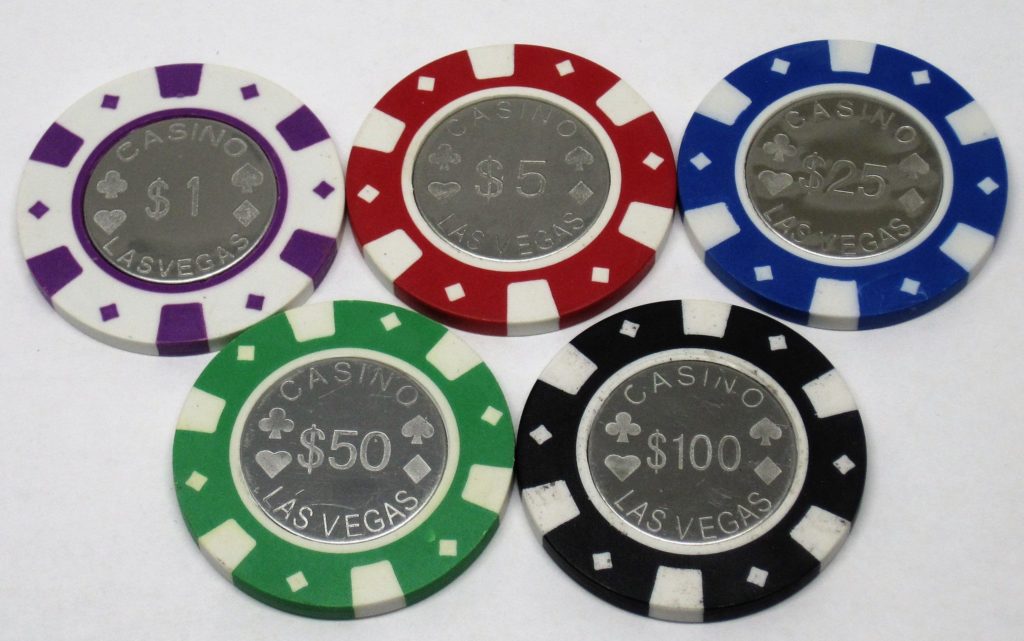
Casinos usually have custom chips with monetary value and the name of the casino printed or engraved on the face. The chips can be multifaceted and stylized with patterns. Color coding can follow the values above, or individual casinos may have their unique color-coding systems.
Atlanta Casinos: Most casinos follow the basic primary color-coding values for white, pink, red, green and black chips with the addition of yellow chips at $ 20 and blue chips worth $ 10.
Las Vegas: These casinos also follow basic primary color coding, but also add $ 20 chips. The Poker Room at the Wynn casino also includes $ 2 brown chips and $ 3 peach chips.
California: There are no statutory mandates for chip playing colors in California, but there is common color coding in most organized games:
$ 1: Usually blue, but may vary.
$ 2: Green
$ 3: Red
$ 5: Yellow
$ 10: brown
$ 20: Black
$ 25: Purple
$ 100: White (sometimes too big)
$ 500: brown, gray (often oversized)
Denomination of high-value casinos
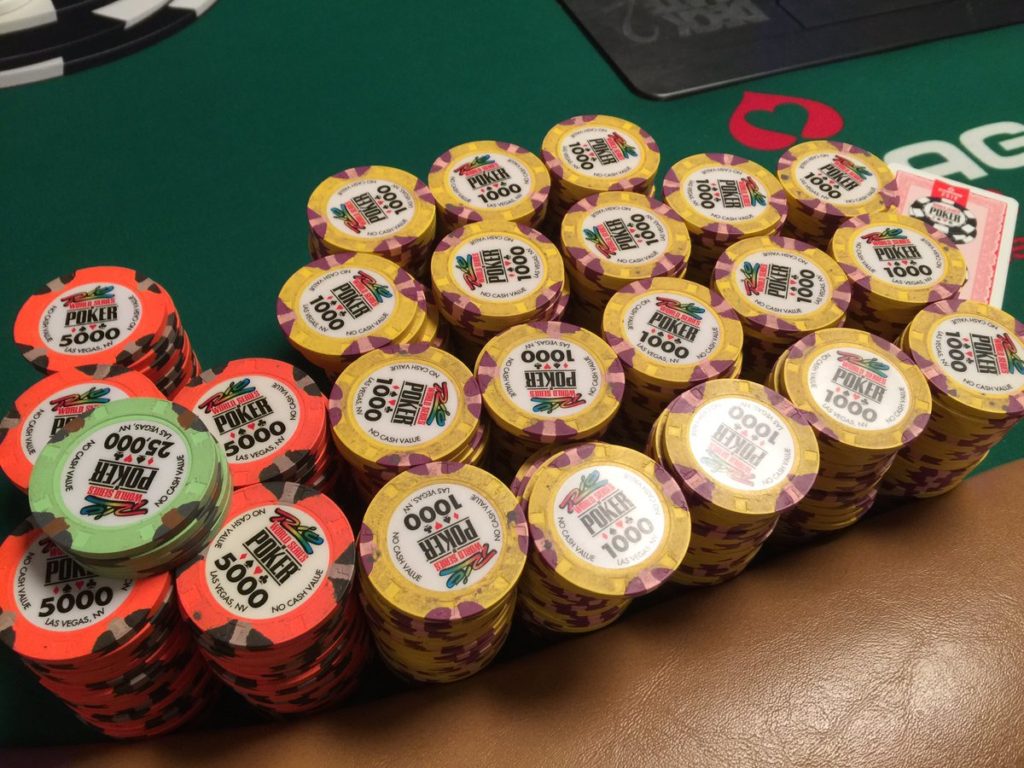
Chips over $ 5,000 are rare in casinos, as such high-stakes games are usually held out of public view. For very high stakes games, casinos can use rectangular tiles that relate to the size of the playground. In casinos where high-stakes gambling is permitted in public areas, there may be plaques in denominations of 5,000, 10,000, 25,000 and above. These casinos are generally only located in Nevada and Atlantic City.
History of poker chips
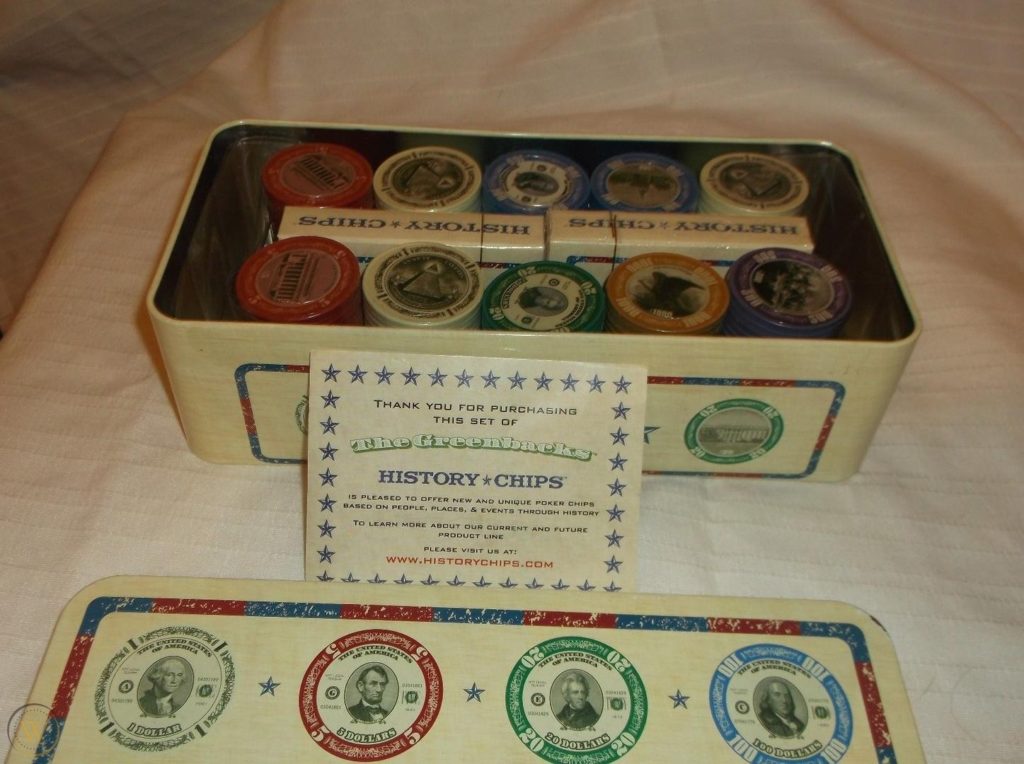
Gambling throughout history has always been used by some form of marker to represent cash or other forms of currency, but forms of standardizing betting chips of the type we now know came into use during the early 1800s when salons and casinos in the West began to use carved pieces of bone, ivory or clay-like chips in home games.
These early chips were easily copied, though in the 1880s commercial companies began producing custom clay chips for salons and custom-made playhouses. These chips have been carefully styled to make them a specific customer, and therefore difficult to counterfeit.
In modern casinos, chips are customized and manufactured, and many still contain a large percentage of clay in their composite material. Some casinos use ceramic chips. The weight, texture, design, and color are all very carefully controlled, making them harder to counterfeit than paper currency. Some casinos even incorporate their gambling markers with microchips, making them virtually impossible to copy.
Clay Poker chips
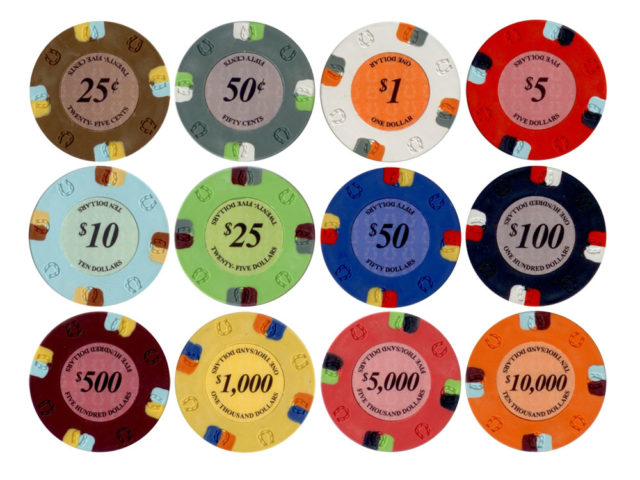
There are three types of materials that most poker chips can be purchased. The most difficult types are known as chipped clay chips, though they are indeed made of a combination of clay and other materials, and the standard casino is 39 mm in diameter.
They have a nice rug and weigh from 8 to 11.5 grams apiece. If you want to give your players a special experience, you will want to make extra money and get these chips. You can go the extra mile and get custom designs on them. While this is starting to get expensive, it almost completely negates the possibility of people introducing chips into your game.
Metal Poker chips
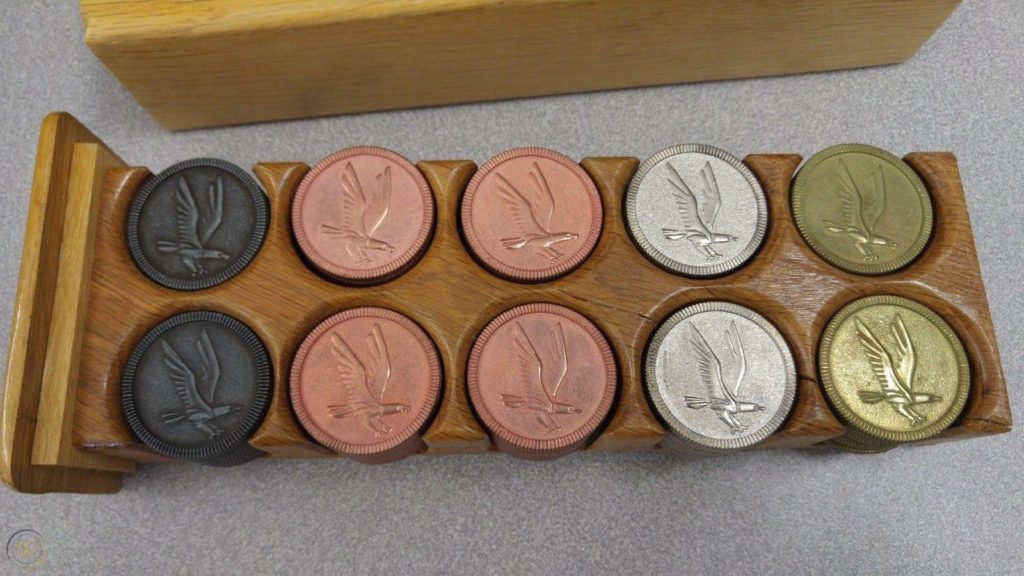
Another type of poker chip is made of a metal core surrounded by plastic and weighs 8 or 11.5 grams. These metalcore composite poker chips are the closest match to what you will find in most casinos these days and are a good, durable choice.
Plastic poker chips
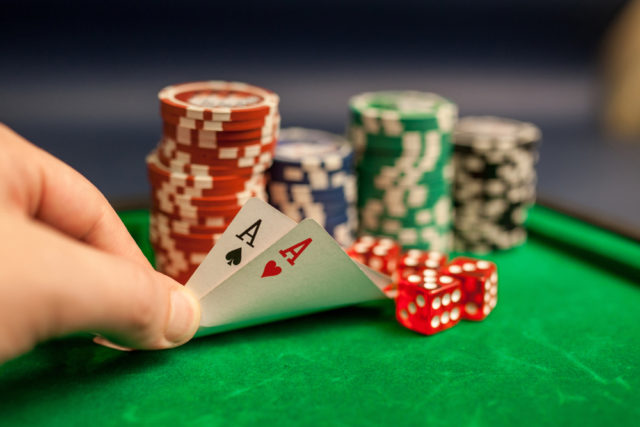
Lastly, you will find plastic poker chips. They are not as significant as the other two types of chips and are usually filled with more colors than are useful, but they are much cheaper and end up getting the job.














